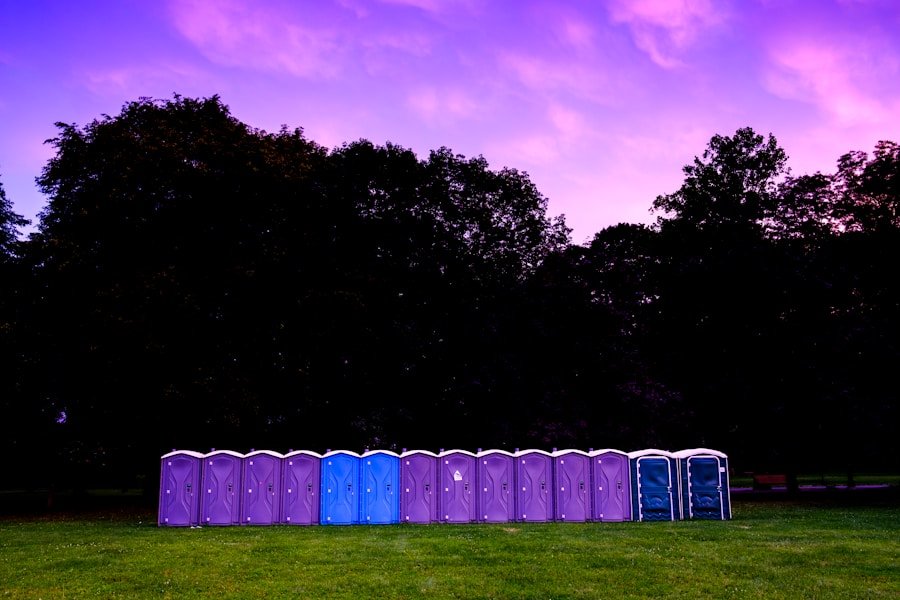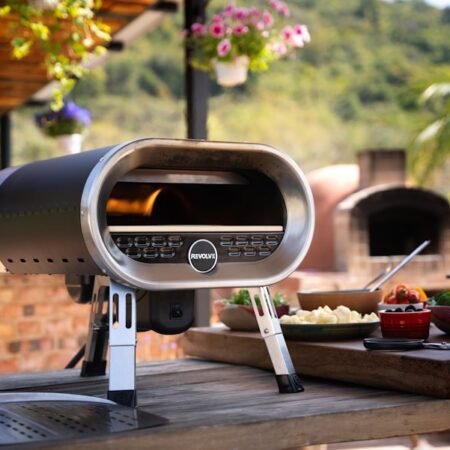When venturing into the great outdoors, having the right navigation tools is crucial for a safe and enjoyable camping experience. Whether you are hiking through dense forests, trekking across rugged terrain, or navigating through unfamiliar territory, having the ability to accurately pinpoint your location and plan your route is essential. Without the proper navigation tools, you run the risk of getting lost, disoriented, or even putting yourself in danger.
This is why it is important to carefully consider which navigation tool is best suited for your camping trip – GPS devices or traditional maps. In the wild, the landscape can be unpredictable and challenging to navigate. From dense foliage to steep inclines, there are numerous obstacles that can make it difficult to find your way.
This is where navigation tools come into play, providing you with the means to stay on course and reach your destination safely. Whether you are a seasoned outdoor enthusiast or a novice camper, having reliable navigation tools can make all the difference in your camping experience. With the right tools at your disposal, you can explore new terrain with confidence and peace of mind.
Key Takeaways
- Navigation tools are crucial for camping in the wild to ensure safety and prevent getting lost.
- GPS devices offer advantages such as real-time tracking and convenience, but they also have disadvantages like reliance on battery and signal.
- Traditional maps require skill and practice to use effectively, but they offer a sense of adventure and connection to the environment.
- When choosing a navigation tool for camping, consider factors such as the terrain, weather conditions, and personal navigation skills.
- Finding the right balance between GPS devices and maps is essential for making informed decisions and maximizing safety in the wilderness.
Advantages and Disadvantages of GPS Devices for Camping
GPS devices have become increasingly popular among outdoor enthusiasts due to their convenience and accuracy. These handheld devices use satellite technology to pinpoint your exact location, allowing you to track your movements and plan your route with ease. One of the main advantages of GPS devices is their ability to provide real-time navigation information, making it easier to stay on course and avoid getting lost.
Additionally, many GPS devices come equipped with features such as topographic maps, waypoints, and route planning tools, which can be incredibly useful for navigating through the wilderness. However, GPS devices also have their drawbacks. One of the main disadvantages is their reliance on battery power and satellite signals.
In remote areas with limited or no signal coverage, GPS devices may struggle to provide accurate navigation information. Additionally, GPS devices can be expensive to purchase and maintain, requiring regular updates and battery replacements. Furthermore, some outdoor purists argue that relying solely on GPS devices can detract from the traditional skills of map reading and navigation.
While GPS devices offer many benefits, it is important to consider their limitations and weigh them against the advantages when choosing a navigation tool for camping.
The Art of Navigating with Traditional Maps
Traditional maps have been a staple of outdoor navigation for centuries, providing campers with a reliable and time-tested method of finding their way in the wild. Unlike GPS devices, maps do not rely on technology or battery power, making them a dependable option for navigating in remote areas. With a map in hand, you can study the terrain, identify key landmarks, and plan your route using a combination of compass bearings and visual cues.
This hands-on approach to navigation can be both challenging and rewarding, allowing you to develop valuable skills and a deeper understanding of the landscape. While traditional maps offer many benefits, they also have their limitations. One of the main drawbacks of using maps for navigation is their susceptibility to wear and tear.
Paper maps can become damaged by water, torn by rough handling, or faded by sunlight, making them less reliable over time. Additionally, reading and interpreting maps requires a certain level of skill and experience, which may be daunting for beginners. Despite these challenges, many outdoor enthusiasts continue to advocate for the use of traditional maps as a valuable tool for navigating in the wilderness.
How to Choose the Best Navigation Tool for Your Camping Trip
| Navigation Tool | Pros | Cons |
|---|---|---|
| GPS Devices | Accurate location tracking | Dependent on battery life |
| Maps | No battery dependency | Requires map reading skills |
When it comes to choosing the best navigation tool for your camping trip, there are several factors to consider. First and foremost, you should assess the specific needs and requirements of your trip. Are you planning to hike through rugged terrain or navigate across open plains?
Will you be camping in an area with limited satellite coverage? Understanding the unique challenges of your camping trip will help you determine which navigation tool is best suited for your needs. In addition to considering the terrain and conditions of your camping trip, it is important to evaluate your own skills and experience with navigation.
If you are new to outdoor navigation, you may benefit from using a GPS device with user-friendly features and intuitive interface. On the other hand, if you are an experienced navigator with a strong understanding of map reading and compass use, you may prefer to rely on traditional maps for your camping trip. Ultimately, the best navigation tool for your camping trip will depend on a combination of factors including terrain, conditions, personal skills, and preferences.
The Role of Technology in Outdoor Navigation
As technology continues to advance, outdoor navigation tools have evolved to offer a wide range of features and capabilities. In addition to GPS devices and traditional maps, there are now a variety of digital mapping apps and software available for smartphones and tablets. These digital tools provide users with access to detailed maps, route planning tools, and real-time navigation information, all within the convenience of a handheld device.
While these digital tools offer many benefits, they also come with their own set of challenges and limitations. One of the main advantages of digital mapping apps is their accessibility and convenience. With a smartphone or tablet, you can access a wealth of mapping resources at your fingertips, making it easier to plan your route and stay on course.
Additionally, many digital mapping apps offer features such as offline map downloads, which can be useful in areas with limited or no signal coverage. However, digital mapping apps also rely on battery power and signal reception, making them susceptible to the same limitations as GPS devices. Furthermore, using digital mapping apps in the wilderness may pose a risk of damaging or losing your device, which could leave you without a reliable navigation tool.
Tips for Using GPS Devices and Maps in the Wilderness
Regardless of whether you choose to use GPS devices or traditional maps for your camping trip, there are several tips that can help you make the most of your navigation tools in the wilderness. First and foremost, it is important to familiarize yourself with your chosen navigation tool before setting out on your trip. If you are using a GPS device, take the time to learn how to use its features and functions effectively.
If you are using traditional maps, practice reading and interpreting them in different terrain and conditions. In addition to familiarizing yourself with your navigation tools, it is important to carry backup options in case of emergencies or technical failures. For GPS devices, this may include carrying spare batteries or a portable charger to ensure that your device remains powered throughout your trip.
For traditional maps, consider carrying multiple copies or laminating them to protect against damage from water or rough handling. By having backup options available, you can mitigate the risk of being left without a reliable navigation tool in the event of unforeseen circumstances.
Making Informed Decisions: Finding the Right Balance Between GPS Devices and Maps
Ultimately, the decision to use GPS devices or traditional maps for camping comes down to finding the right balance between convenience and reliability. While GPS devices offer real-time navigation information and user-friendly features, they also come with limitations such as battery reliance and signal coverage. On the other hand, traditional maps provide a time-tested method of navigating in the wilderness but require a certain level of skill and experience to use effectively.
When making informed decisions about navigation tools for camping, it is important to consider both the advantages and disadvantages of each option. By weighing these factors against the specific needs and requirements of your camping trip, you can determine which navigation tool is best suited for your individual circumstances. Whether you choose to rely on GPS devices, traditional maps, or a combination of both, having the right navigation tools at your disposal will ensure that you can navigate through the wild with confidence and peace of mind.
In conclusion, choosing the best navigation tool for camping – GPS devices or traditional maps – requires careful consideration of various factors including terrain, conditions, personal skills, and preferences. Both GPS devices and traditional maps offer unique advantages and disadvantages that should be weighed against each other when making informed decisions about navigation tools for camping trips. By understanding the role of technology in outdoor navigation and following tips for using GPS devices and maps in the wilderness, campers can make informed decisions that strike the right balance between convenience and reliability when navigating through the wild.
FAQs
What are the different types of navigation tools for camping?
There are two main types of navigation tools for camping: GPS devices and maps. GPS devices use satellite technology to pinpoint your location and provide directions, while maps are physical representations of the area you are navigating.
What are the advantages of using GPS devices for camping?
GPS devices offer real-time tracking, precise location information, and the ability to store waypoints and routes. They are also convenient and easy to use, especially for those who are not experienced with map reading.
What are the advantages of using maps for camping?
Maps provide a big-picture view of the area, including topographical features and landmarks. They do not rely on batteries or satellite signals, making them reliable in remote areas. Additionally, using maps can improve navigation and orienteering skills.
What are the limitations of GPS devices for camping?
GPS devices rely on battery power and satellite signals, which may not be available in remote or heavily wooded areas. They can also be prone to technical malfunctions and may not provide the same level of detail as a map.
What are the limitations of using maps for camping?
Maps require a certain level of skill and knowledge to read and interpret, which can be challenging for inexperienced campers. They also do not provide real-time tracking or precise location information.
Which navigation tool is best for camping: GPS devices or maps?
The best navigation tool for camping ultimately depends on individual preferences, experience level, and the specific camping environment. Some campers may prefer the convenience and precision of GPS devices, while others may value the reliability and skill-building aspects of using maps. It is also common for campers to use a combination of both tools for optimal navigation.













